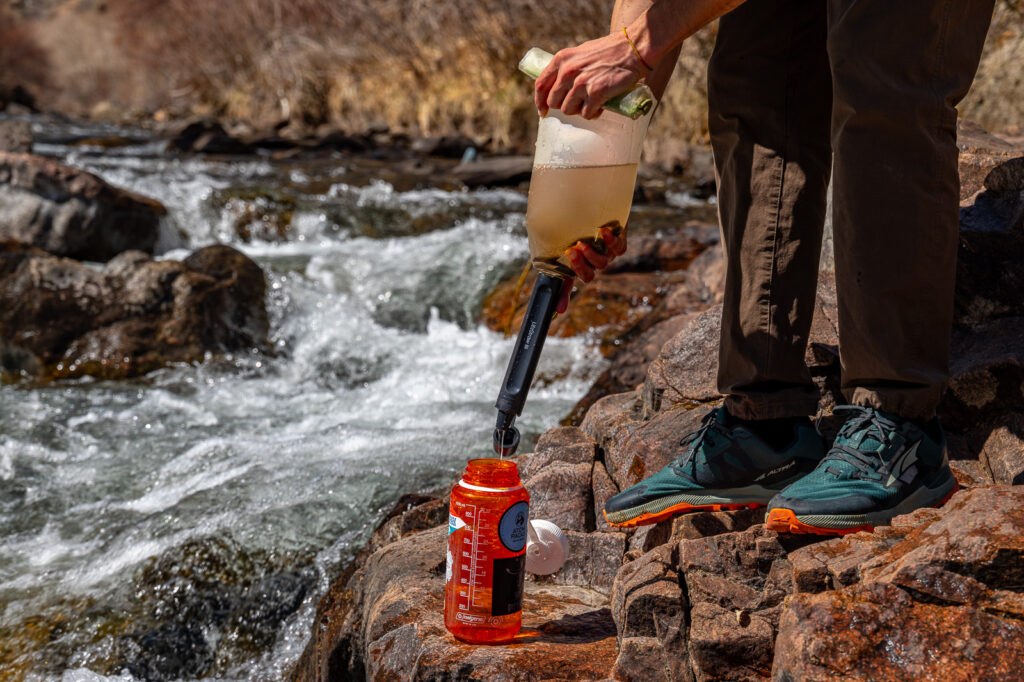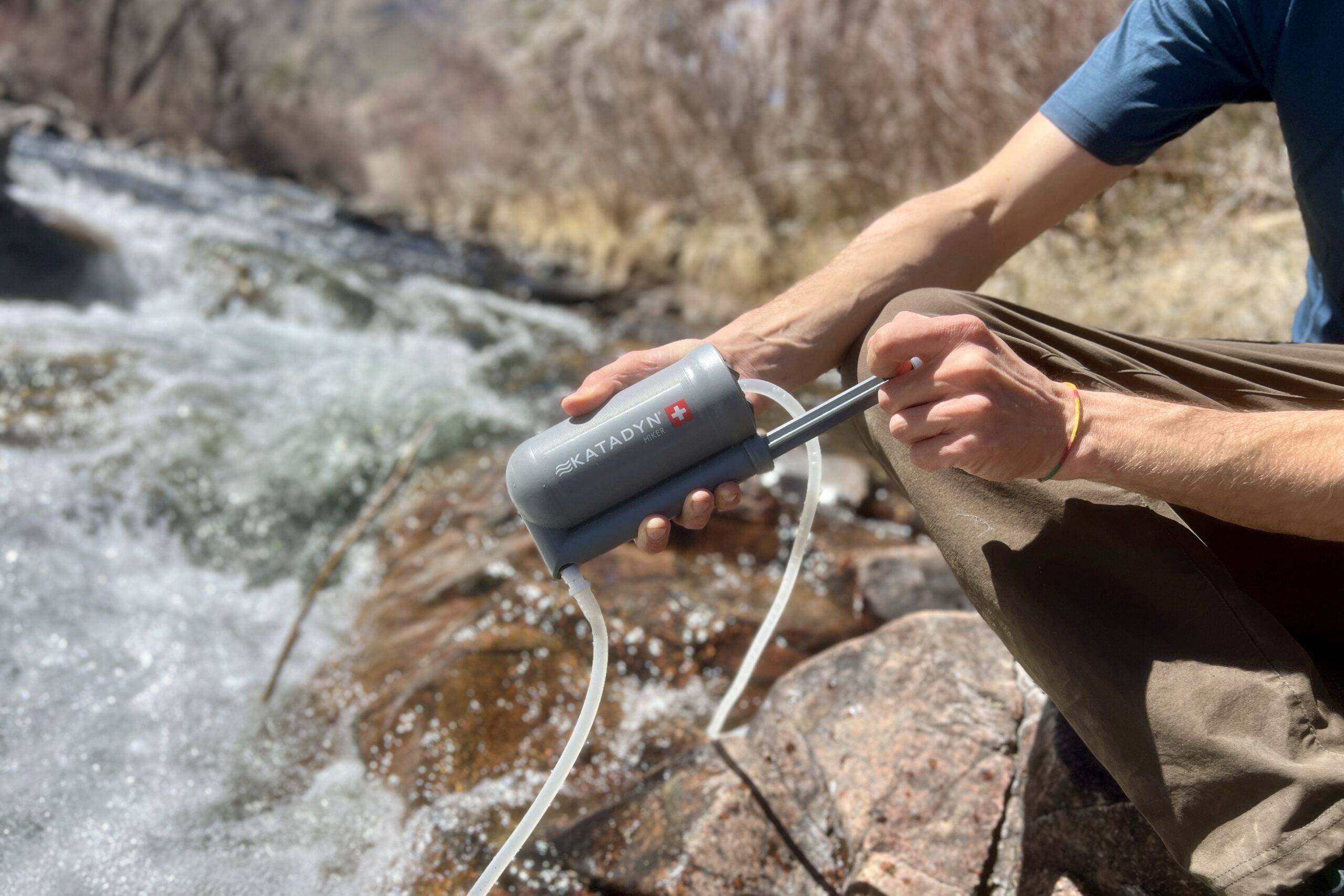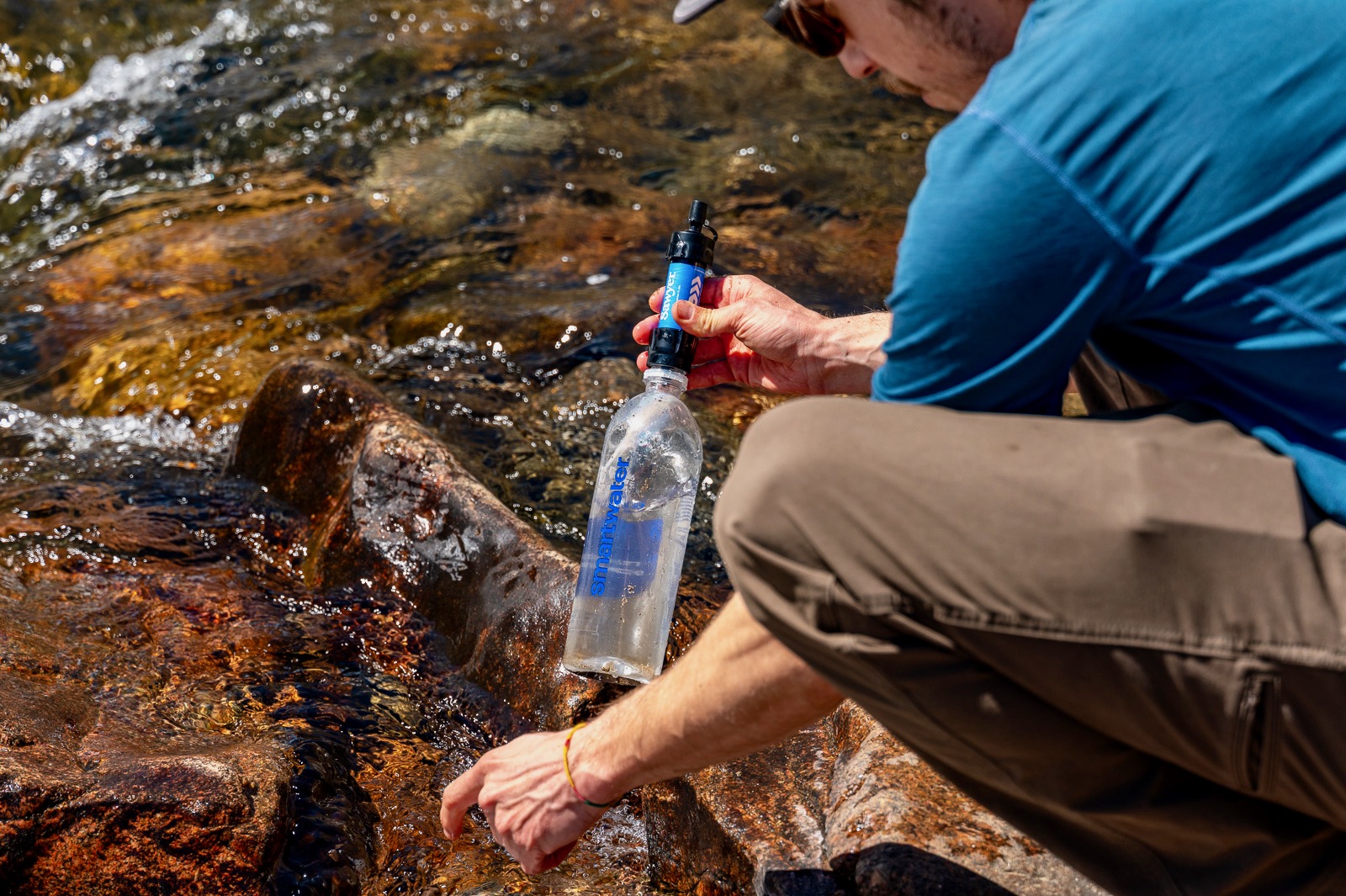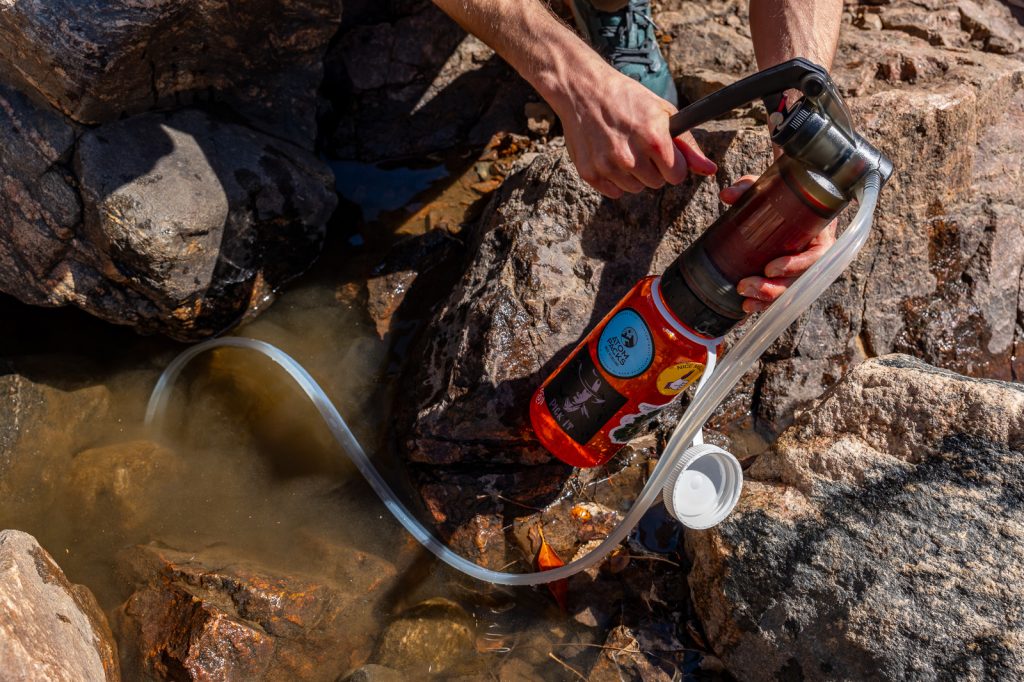Are you worried about the quality of the water you drink every day? Choosing the best water purification method can protect your health and give you peace of mind.
With so many options out there, it’s easy to feel confused about which one is right for you. This guide will help you understand the top methods, so you can make a smart choice for your home and family. Keep reading to discover how to get clean, safe water effortlessly.
Common Water Contaminants
Water often contains different harmful substances. These can affect health and taste. Knowing the common contaminants helps choose the best water purification method.
Contaminants come from natural sources or human activities. They include living organisms, chemicals, and physical materials. Each type needs a specific way to remove it.
Biological Pollutants
Biological pollutants include bacteria, viruses, and parasites. These tiny organisms can cause diseases when found in water. They grow in dirty or untreated water.
Common biological pollutants are E. coli, Giardia, and Cryptosporidium. These can cause stomach pain, diarrhea, and other illnesses. Removing them usually requires filtration or disinfection.
- Bacteria: E. coli, Salmonella
- Viruses: Norovirus, Hepatitis A
- Parasites: Giardia, Cryptosporidium
Chemical Impurities
Chemical impurities come from pollution or natural minerals. They include pesticides, heavy metals, and chlorine. These can harm your health over time.
Some chemicals change water taste and smell. Others can cause long-term health problems. Removing chemicals often needs activated carbon filters or reverse osmosis.
- Pesticides and herbicides
- Lead, mercury, arsenic
- Chlorine and chloramine
Physical Particles
Physical particles are dirt, sand, and rust. These come from soil, old pipes, or sediment. They make water cloudy and can damage appliances.
Physical particles usually do not cause illness. They affect water quality and appearance. Simple filtration or sediment filters remove these particles effectively.
- Sand and soil particles
- Rust from pipes
- Silt and clay
Popular Water Purification Methods
Clean water is important for health. Many ways exist to purify water and make it safe.
This article explains popular water purification methods you can use at home or outdoors.
Boiling
Boiling water kills most germs and bacteria. It is one of the oldest and simplest ways to clean water.
Bring water to a rolling boil for at least one minute to make it safe to drink.
Filtration
Filtration removes dirt, sand, and some germs from water. Filters use materials like cloth, charcoal, or ceramic.
Some filters can remove bacteria and protozoa, but not all viruses.
- Simple cloth filters block large particles
- Activated carbon filters improve taste and smell
- Ceramic filters trap bacteria and protozoa
Distillation
Distillation heats water to create steam. The steam cools down and becomes pure water.
This process removes most contaminants, including salts, metals, and many chemicals.
Chemical Treatment
Chemicals like chlorine or iodine kill germs in water. This method is easy and fast.
Some people may dislike the taste or smell after treatment. Follow instructions for safe use.
- Chlorine tablets are common and effective
- Iodine kills bacteria but should not be used long-term
- Wait time is needed before drinking treated water
Ultraviolet (uv) Purification
UV light kills germs by damaging their DNA. It works quickly and without chemicals.
UV purifiers need clear water to work well. They do not remove dirt or chemicals.
Reverse Osmosis
Reverse osmosis pushes water through a fine membrane. It removes many contaminants like salts, bacteria, and chemicals.
This method produces very clean water but uses more energy and can waste some water.
Effectiveness Of Each Method
Water purification methods vary in how well they clean water. Some remove germs, while others remove chemicals or improve taste. Choosing the right method depends on your water quality needs.
This guide explains how different methods work for removing bacteria, chemicals, and improving taste and odor.
Removal Of Bacteria And Viruses
Some purification methods kill or remove harmful bacteria and viruses. Boiling water is very effective and kills almost all germs. UV light systems destroy germs by damaging their DNA.
Filters with very small pores can block bacteria. However, not all filters remove viruses because viruses are smaller than bacteria.
- Boiling kills nearly all bacteria and viruses
- UV light destroys germs but needs clear water
- Microfiltration removes bacteria but not all viruses
Elimination Of Chemicals
Certain methods target chemicals in water. Activated carbon filters absorb many chemicals like chlorine and pesticides. Reverse osmosis removes a wide range of chemicals by pushing water through a membrane.
Distillation also removes chemicals by boiling water and collecting the steam, leaving chemicals behind.
- Activated carbon removes chlorine and some pesticides
- Reverse osmosis removes most chemicals and minerals
- Distillation removes chemicals by boiling and condensing
Taste And Odor Improvement
Some purification methods improve water taste and smell. Activated carbon filters are good at removing bad odors and tastes caused by chlorine or organic compounds.
Boiling water can reduce some odors but may not remove all tastes. Reverse osmosis improves taste by removing minerals and impurities.
- Activated carbon filters remove bad tastes and odors
- Boiling reduces some odors but not all tastes
- Reverse osmosis makes water taste clean and fresh
Cost And Maintenance Factors
Choosing the best water purification method depends on cost and how much upkeep it needs. These factors affect the overall value of the system.
Understanding the expenses and maintenance helps you pick a system that fits your budget and lifestyle.
Initial Investment
The initial cost is the amount you pay to buy and install the water purifier. Some systems cost more upfront but last longer.
Simple filters are cheaper, while advanced ones like reverse osmosis need higher spending at first.
- Basic filters: low initial cost
- UV purifiers: moderate initial cost
- Reverse osmosis: high initial cost
- Distillation units: highest initial cost
Operating Costs
Operating costs include electricity, water use, and other daily expenses. Some systems use more energy or water than others.
Low operating costs keep your monthly bills small. High costs add up over time.
- Basic filters: very low electricity use
- UV purifiers: use moderate electricity
- Reverse osmosis: high water waste and electricity use
- Distillation units: high electricity use
Filter Replacement And Upkeep
Filters and parts need regular replacement to keep water pure. Some filters last longer than others.
Maintenance includes cleaning and checking the system. Easy upkeep saves time and money.
- Basic filters: replace every 3-6 months
- UV bulbs: replace yearly
- Reverse osmosis membranes: replace every 1-2 years
- Distillation units: clean regularly, replace parts as needed
Environmental Impact
Choosing the best water purification method means thinking about the environment. Some methods use more energy or create more waste. It is important to find ways that protect nature.
Water purification methods differ in their effects on the planet. We will look at energy use, waste, and how sustainable each method is.
Energy Consumption
Many water purification systems use electricity to work. Some need more power than others. Using less energy helps reduce pollution and saves resources.
For example, methods like reverse osmosis use pumps that need a lot of energy. Solar-powered filters use very little energy. Choosing low-energy methods can help protect the environment.
Waste Generation
Some purification methods create waste that needs to be thrown away. This waste can harm the environment if not handled correctly.
Methods like chemical treatment produce sludge or leftover chemicals. Filters also need to be replaced and can add to landfill waste. Choosing methods with less waste is better for the earth.
- Chemical treatment can create hazardous sludge
- Filter cartridges need regular replacement
- UV systems produce little to no solid waste
Sustainability Considerations
Sustainability means using resources without harming the future. Water purification should be safe for people and nature over time.
Methods that use natural materials and renewable energy are more sustainable. Reusing parts and reducing waste also help. Sustainable choices keep water clean without hurting the planet.
- Solar-powered purification uses renewable energy
- Bio-sand filters use natural materials
- Systems designed for long life reduce waste

Credit: www.cleverhiker.com
Choosing The Right Method For Your Needs
Choosing the best water purification method depends on several factors. The right choice keeps your water safe and clean.
Think about your water source, where you will use it, and your budget. These details help find the best option.
Water Source Analysis
Knowing your water source is key. Different sources have different contaminants that need removal.
Well water may have minerals and bacteria. Tap water can contain chlorine or lead. Rivers and lakes might hold dirt or germs.
- Test your water for chemicals and germs
- Identify if the water is clear or cloudy
- Check for smells or strange tastes
Household Vs. Outdoor Use
Water needs differ at home and outdoors. At home, you want easy and constant access to clean water.
Outdoors, you need portable and quick solutions. The method should work well in nature without power.
- Household use: filters, UV systems, or reverse osmosis
- Outdoor use: portable filters, purification tablets, or boiling
- Consider weight and ease of use when outside
Budget And Convenience
Water purification methods vary in cost and ease. Pick one that fits your budget and daily routine.
Some systems need replacement parts or electricity. Others use simple tools or chemicals that cost less.
| Method | Cost | Ease of Use |
|---|---|---|
| Boiling | Low | Simple but time-consuming |
| Portable Filters | Medium | Easy and fast outdoors |
| Reverse Osmosis | High | Needs installation and power |
| Purification Tablets | Low | Quick but may leave taste |
Emerging Technologies In Water Purification
Water purification is important for safe drinking water. New technologies help clean water more efficiently.
These new methods use science to remove harmful things from water. They aim to make water clean and safe.
Nanotechnology
Nanotechnology uses tiny particles to clean water. These particles can remove bacteria, viruses, and chemicals.
Nanomaterials can absorb pollutants or kill germs quickly. They work at a very small scale to improve water quality.
- Nanoparticles remove heavy metals like lead and mercury
- Antibacterial nanomaterials kill harmful microbes
- Some nanomaterials break down chemical pollutants
Solar Purification
Solar purification uses sunlight to clean water. It is a low-cost and eco-friendly way to kill germs.
Sunlight can destroy bacteria and viruses by using UV rays. Solar methods work well in places with strong sun.
- Solar water disinfection (SODIS) uses UV rays from the sun
- Solar stills remove salt and impurities by evaporation
- These methods need no electricity or chemicals
Advanced Filtration Systems
Advanced filters use new materials and designs to clean water. They remove very small particles and chemicals.
These filters include membranes and carbon filters. They can remove viruses, bacteria, and bad tastes.
- Membrane filters block tiny germs and particles
- Activated carbon filters remove chemicals and odors
- Some filters combine multiple technologies for better cleaning

Credit: www.cleverhiker.com

Credit: www.cleverhiker.com
Frequently Asked Questions
What Is The Safest Water Purification Method?
Reverse osmosis is considered the safest water purification method. It effectively removes contaminants like bacteria, viruses, and heavy metals. By using a semipermeable membrane, it ensures only pure water passes through. It’s widely used for home and industrial water purification, offering a reliable solution for clean drinking water.
How Does Boiling Water Purify It?
Boiling water kills most bacteria, viruses, and parasites. By reaching temperatures above 100°C, harmful microorganisms are destroyed. It’s a simple and effective method for making water safe to drink. However, boiling doesn’t remove chemical contaminants or heavy metals, so it’s best used with other purification methods.
Is Uv Light Effective For Water Purification?
UV light is effective for water purification. It inactivates harmful microorganisms by disrupting their DNA. This method is fast and doesn’t use chemicals, preserving water taste. However, it doesn’t remove chemical pollutants or sediments, so it works best when combined with filtration.
Can Activated Carbon Filters Purify Water?
Activated carbon filters are excellent for improving water taste and odor. They remove chlorine, volatile organic compounds, and some heavy metals. However, they are not effective against bacteria, viruses, or dissolved inorganic substances. For comprehensive purification, combine activated carbon filters with other methods like reverse osmosis or UV treatment.
Conclusion
Choosing the best water purification method depends on your needs and water source. Each method has strengths and limits. Boiling kills germs but uses fuel and time. Filters remove particles but may need replacement. UV light works fast but needs electricity.
Think about cost, ease, and safety. Clean water keeps you healthy and safe. Use the method that fits your life best. Stay informed and protect your water every day.

